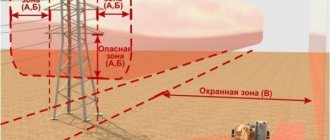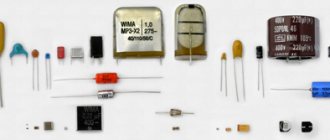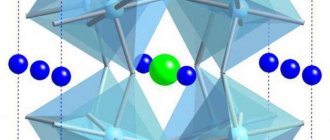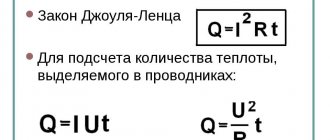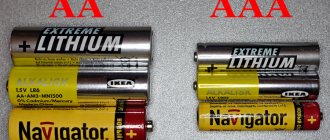What is electrolysis?
Electrolysis is a complex of specific processes in a system of electrodes and electrolyte when a direct electric current flows through it. Its mechanism is based on the occurrence of ionic current. An electrolyte is a type 2 conductor (ionic conductivity) in which electrolytic dissociation occurs. It is associated with decomposition into ions with a positive (cation) and negative (anion) charge.
The electrolysis system necessarily contains a positive (anode) and a negative (cathode) electrode. When a direct electric current is applied, cations begin to move towards the cathode, and anions begin to move towards the anode. The cations are mainly metal ions and hydrogen, and the anions are oxygen and chlorine. At the cathode, cations attach excess electrons to themselves, which ensures the occurrence of the reduction reaction Men+ + ne → Me (where n is the valence of the metal). At the anode, on the contrary, an electron is given up from the anion with the occurrence of an oxidation reaction.
Thus, the redox process is ensured in the system. It is important to consider that appropriate energy is required for its occurrence. It must be provided by an external current source.
Electrolytes
Electrolytes are substances that can conduct electric current due to their own dissociation into ions.
Dissociation occurs in melts and solutions, or inside the electrolytes themselves - due to the movement of ions in their crystal lattices. The most striking examples of electrolytes are solutions of salts, bases and acids. In some cases, dissociation occurs in crystals—for example, in the case of zirconium dioxide or silver iodide.
Faraday's Laws of Electrolysis
The great physicist M. Faraday, with his research, made it possible not only to understand the nature of electrolysis, but also to make the necessary calculations for its implementation. In 1832, his laws appeared, linking the main parameters of the ongoing processes.
First Law
Faraday's first law states that the mass of the substance being reduced at the anode is directly proportional to the electric charge induced in the electrolyte: m = kq = k*I*t, where q is the charge, k is the coefficient or electrochemical equivalent of the substance, I is the strength of the current flowing through electrolyte, t – current flow time.
Second Law
Faraday's second law made it possible to determine the proportionality coefficient k. It sounds like this: the electrochemical equivalent of any substance is directly proportional to its molar mass and inversely proportional to its valency. The law is expressed as:
k = 1/F*A/z , where F is Faraday’s constant, A is the molar mass of the substance, z is its chemical valence.
Applications of Electrolysis
And now the most important thing: why is electrolysis needed at all? Let's consider the use of this type of OVR:
- Using electrolysis of melts of natural compounds in the metallurgical industry, active metals (potassium, sodium, beryllium, calcium, barium) are obtained. Using electrolysis of salt solutions - zinc, cadmium, cobalt and others.
- In the chemical industry, electrolysis is used to produce fluorine, chlorine, hydrogen, oxygen, alkalis, berthollet salt and other substances.
- Electrolysis with a soluble anode is used to apply metal coatings (chrome, gold, nickel, silver), which protects metal products from corrosion and gives them a decorative appearance.
Electrolysis of melts
One of the electrolysis options is to use a melt as an electrolyte. In this case, only melt ions participate in the electrolysis process. A classic example is the electrolysis of molten salt NaCl (table salt). Negative ions rush to the anode, which means gas (Cl) is released. Metal reduction will occur at the cathode, i.e. precipitation of pure Na, formed from positive ions that have attracted excess electrons. Similarly, other metals (K, Ca, Li, etc.) can be obtained from the solution of the corresponding salts.
During electrolysis in a melt, the electrodes do not undergo dissolution, but participate only as a source of current. In their manufacture, you can use metal, graphite, and some semiconductors. It is important that the material has sufficient conductivity. One of the most common materials is copper.
Electrolysis
Electrolysis on an industrial scale is used to extract metals from metal-containing ores and purify them from impurities. Using this physical and chemical process, copper and aluminum are produced in production. The charging of chemical current sources (batteries) also occurs due to the occurrence of this reaction.
Definition of electrolysis
A chemical reaction, as a result of which components from electrolytic solutions of substances are deposited on the electrodes, and proceeding under the influence of an electric current - that’s what electrolysis is. It includes a complex of oxidation and reduction processes occurring at the electrodes. A prerequisite is the movement of direct current from electrode to electrode.
What is the process
The technological process of electrolysis, or also called galvanolysis, occurs according to the laws of chemistry and physics. In this case, electrically conductive solutions (liquids) are taken, in which an electric field is organized using two electrodes.
Attention! The electrodes have names. Cathode (K) is an electrode with a negative potential, anode (A) is an electrode with a positive potential.
The ions move in an orderly manner through a solution called an electrolyte. In this case, ions belonging to metals, hydrogen (cations) are directed to the cathode, ions belonging to acidic residues or hydroxyl groups (anions) tend to the anode. Cations have a positive sign of charge, anions have a negative sign. Passing electric current during electrolysis can be carried out both through solutions and through melts of electrolytes.
Information. When preparing an electrolyte, the solution dissociates into ions. This is due to the interaction of the solvent with the solute. This reaction is called primary. Further exposure of the electrolyte to electric current causes a secondary galvanolysis reaction.
This division into primary and secondary allowed Michael Faraday to justify the laws applied to galvanolysis.
Electrolysis of solutions
Using water to prepare the electrolyte solution complicates the process. In solutions of salts and alkalis, water behaves differently during electrolysis. This is reflected in the fact that H2O behaves as both an oxidizing agent and a reducing agent. At the cathode, it receives electrons and reduces hydrogen atoms to the gaseous form of hydrogen. At the anode, water gives off negatively charged particles, then the oxygen atoms are oxidized to the gaseous form of oxygen. Acid used as an electrolyte solution does not have this problem.
Cathode processes
A cathode placed in salt solutions attracts metal cations. These cations act as oxidizing agents.
Important! Individual metals have different ion oxidizing abilities. To evaluate the oxidation-reduction capabilities, it is necessary to rely on the electrochemical series of voltages.
Features of electrolysis in solutions
Electrolysis in an aqueous solution differs significantly from a melt. There are 3 competing processes taking place here: oxidation of water with the release of oxygen, oxidation of the anion and anodic dissolution of the metal. The process involves ions of water, electrolyte and anode. Accordingly, reduction of hydrogen, electrolyte cations and anode metal can occur at the cathode.
The possibility of these competing processes occurring depends on the magnitude of the electrical potentials of the system. Only the process that requires less external energy will proceed. Consequently, cations with the maximum electrode potential will be reduced at the cathode, and anions with the lowest potential will be oxidized at the anode. The electrode potential of hydrogen is taken as “0”. For example, for potassium it is (-2.93 V), for sodium - (-2.71 V), for lead (-0.13 V), and for silver - (+0.8 V).
Table of changes of substances using electrolysis
Strengthening the restorative abilities of substances:
| Na+ | Mg2+ | Al3+ | Zn2+ | Fe3+ | Ni2+ | Sn2+ | Pb2+ | H+ | Cu2 | Ag+ |
| Sodium | Magnesium | Aluminum | Zinc | Iron | Nickel | Tin | Lead | Hydrogen | Copper | Silver |
Strengthening the oxidative abilities of substances:
| I- | Br- | Cl- | OH- | NO3- | CO32- | SO42-. |
| Iodide (salts formed by hydroiodic acid) | Bromide (salts formed by hydrobromic acid) | Chloride (salts formed by hydrochloric acid) | Hydroxide | Nitrate (salts formed by nitric acid) | Carbonate (salts formed by carbonic acid) | Sulfate (salts formed by sulfuric acid) |
| Cathode (negative) | Anode (positive) |
| Reduction of cations after hydrogen | Oxidation of oxygen-free acid anions |
| Reduction of cations with medium activity | Oxidation of oxoacid anions |
| Reduction of the most active cations | Oxidation of hydroxide anions |
| Reduction of hydrogen cations |
Electrolysis in gases
Gas can act as an electrolyte only if there is an ionizer. In this case, the current passing through the ionized medium causes the necessary process on the electrodes. However, Faraday's laws do not apply to gas electrolysis. For its implementation, the following conditions are necessary:
- Without artificial ionization of gas, neither high voltage nor high current will help.
- Only acids that do not contain oxygen and are in a gaseous state, and some gases, are suitable for electrolysis.
Important! If the necessary conditions are met, the process proceeds similarly to electrolysis in a liquid electrolyte.
Weak and strong electrolytes
Electrolytes are usually divided into two groups, depending on their ability to dissociate. Strong electrolytes include substances in which the degree of dissociation into ions is 100% (that is, equal to unity). Strong electrolytes are salts, bases and many acids (hydrochloric, hydrobromic, hydroiodic, nitric).
Weak electrolytes are substances that do not completely dissociate. The degree of their dissociation is always less than unity. Moreover, the higher the concentration of such electrolytes in solution, the lower the degree of their dissociation. Weak electrolytes include water, some weak acids and bases.
There is no clear boundary between strong and weak electrolytes. Thus, one substance can exhibit the properties of a strong electrolyte in one solution and the properties of a weak electrolyte in another.
Features of the processes occurring at the cathode and anode
For the practical application of electrolysis, it is important to understand what happens at both electrodes when electrical current is applied. The following processes are typical:
- Cathode. Positively charged ions rush towards it. Here the reduction of metals or the evolution of hydrogen occurs. Several categories of metals can be distinguished based on cationic activity. Metals such as Li, K, Ba, St, Ca, Na, Mg, Be, Al are well reduced only from molten salts. If a solution is used, hydrogen is released due to the electrolysis of water. It is possible to ensure reduction in solution, but with a sufficient concentration of cations, for the following metals - Mn, Cr, Zn, Fe, Cd, Ni, Ti, Co, Mo, Sn, Pb. The process proceeds most easily for Ag, Cu, Bi, Pt, Au, Hg.
- Anode. Negatively charged ions flow to this electrode. When oxidized, they take electrons from the metal, which leads to their anodic dissolution, i.e. transition into positively charged ions that are directed to the cathode. Anions are also classified according to their activity. Only from melts can such anions PO4, CO3, SO4, NO3, NO2, ClO4, F be discharged. In aqueous solutions, it is not they that undergo electrolysis, but water with the release of oxygen. The most easily reacting anions are OH, Cl, I, S, Br.
Properties of electrolytes
Electrolytes have a number of unique properties. If electrodes with different potentials are placed in an electrolyte solution, an electric current will flow through the solution. It is well known that solutions of substances have a higher boiling point and a lower freezing point than the solvent itself. But electrolyte solutions behave somewhat differently - compared to solutions of other substances, they have a higher boiling point and a lower freezing point. Simply put, an electrolyte solution behaves as if it contains more molecules of the substance than it actually does.
Factors affecting the electrolysis process
The electrolysis process depends on the following factors:
- Electrolyte composition. Various impurities have a significant impact. They are divided into 3 types - cations, anions and organics. Substances may be more or less negative than the base metal, which interferes with the process. Organic impurities include pollutants (such as oils) and surfactants. Their concentration has maximum permissible values.
- Current density. In accordance with Faraday's laws, the mass of the deposited substance increases with increasing current strength. However, unfavorable circumstances arise - concentrated polarization, increased voltage, intense heating of the electrolyte. Taking this into account, there are optimal current densities for each specific case.
- Electrolyte pH. The acidity of the medium is also selected taking into account metals. For example, the optimal electrolyte acidity value for zinc is 140 g/cubic dm.
- Electrolyte temperature. It has an ambiguous effect. With increasing temperature, the rate of electrolysis increases, but the activity of impurities also increases. For each process there is an optimal temperature. Usually it is between 38-45 degrees.
Important! Electrolysis can be accelerated or slowed down by various influences and the choice of electrolyte composition. Each application has its own regime, which must be strictly followed.
Application of electrolytes. Acidic and alkaline electrolytes
The previous article talked about the basic properties of electrolytes and safety precautions when working with them. Now we will talk about the types of electrolytes and their applications.
The main use of electrolytes is in industry: the production of current sources, batteries (voltaic cells), accumulators, electrolytic capacitors.
• In analytical practice, pH meters and ionometers with electrodes filled with salt electrolytes are used. With their help, they measure not only the level of acidity of the environment, but also the content and concentration of certain elements in substances.
• In the electrochemical industry, electrolytes are the basis of solutions for galvanizing metals: chrome plating, cadmium plating, galvanizing, gilding, phosphating, etc. Electrolytes are used to pickle metals.
• Medicine and biology also deal with electrolytes. Diagnosis of many diseases is associated with determining the nature of the water-salt and acid-base balance in the body.
Acidic and alkaline electrolytes
Most often we encounter electrolytes in batteries operating in various vehicles. Without them, cars, electric locomotives, locomotives, etc. simply unable to function. They use acidic and alkaline electrolytes. Both types have their advantages and disadvantages.
An alkaline electrolyte is a solution of alkali in water. Typically, sodium, potassium, lithium hydroxide or combinations thereof are used.
Advantages: • long service life; • high reliability; • capable of operating in a wide temperature range; • less toxic gases are released during operation; • unpretentious in operation, require less maintenance than acid ones; • alkaline batteries weigh less, do not contain lead, are not afraid of shaking, strong currents and short circuits. Unfortunately, there are also disadvantages: • alkaline batteries are more expensive; • they have lower efficiency, lower emf value. (electromotive force); • are not capable of providing the starting current necessary to start the car engine.
Alkaline electrolytes are primarily used in electric forklifts and mine electric locomotives, locomotives and electric trains.
In the automotive industry, acid-acid batteries are mainly in demand. An acid electrolyte is a solution of concentrated sulfuric acid in water.
Advantages of batteries with acid electrolyte: • low self-discharge; • high efficiency and the magnitude of the emf; • simple, well-developed maintenance technologies; • capable of delivering high starting current; • much cheaper than alkaline ones. The disadvantages include: • heavy weight; • sensitive to low temperatures - the electrolyte can freeze and damage the entire battery; • not environmentally friendly; • require regular maintenance.
This is important: you cannot change the type of electrolyte in the battery. Alkaline ones are filled only with alkali, acidic ones - only with acid. In our store you can inexpensively buy the following types of alkaline electrolytes: • solid potassium-lithium; • liquid potassium-lithium, density 1.27 • liquid potassium-lithium, density 1.41
Alkaline electrolyte potassium-lithium, solid
An alloy of lithium and potassium hydroxide. It is a powder or granular product. It is used for the production of liquid electrolytes with the desired characteristics.
Alkaline electrolyte potassium-lithium, liquid, density 1.41
Consists of potassium hydroxide, lithium and distilled water. It is a clear liquid with a slight yellow tint. It is used for refilling alkaline batteries, usually in electric forklifts and electric mine locomotives. Can be used in a wide temperature range: from -40 to +40°C.
Alkaline electrolyte potassium-lithium, liquid, density 1.27
A solution prepared from potassium hydroxide, lithium hydroxide and distilled water. Transparent, odorless, with a slight yellow tint. Used to fill alkaline batteries in the mining and automotive industries. Recommended for use in ambient temperatures from -30 °C.



